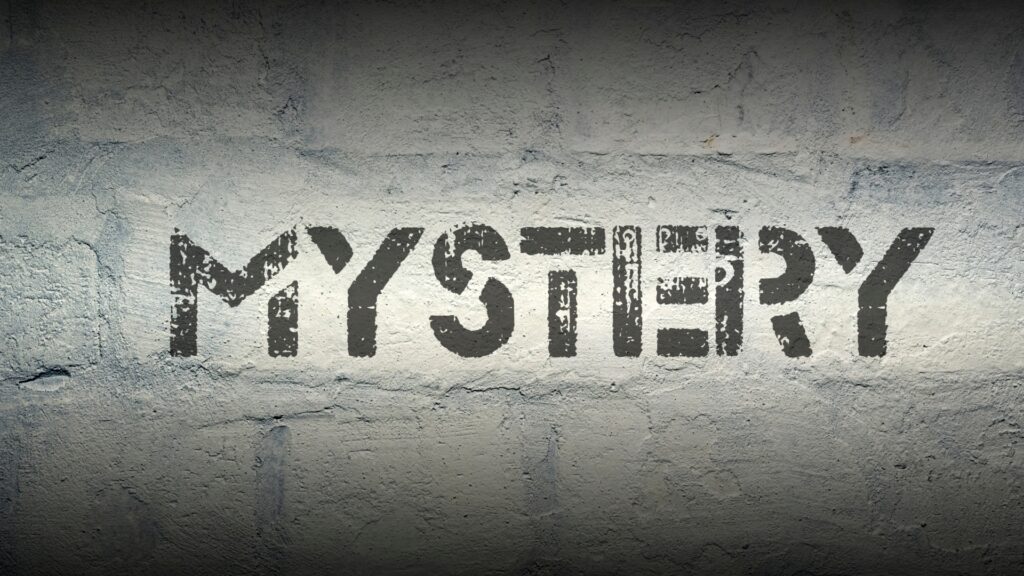The Whisper in the Dark
Have you ever walked into a room and felt like someone—or something—was watching you, even though you were completely alone? Or perhaps heard your name called in a quiet place, only to find no one there? Most of us brush these things off, chalking them up to imagination, coincidence, or stress. But deep down, a question lingers: What if there’s more to it than we know?
The world is brimming with secrets. From eerie disappearances and haunted forests to unsolved codes and forgotten civilizations, mystery clings to the edges of our everyday lives. This article isn’t just a list of strange happenings; it’s a journey—a storytelling expedition into the hidden corners of reality where logic breaks down, and the unknown waits patiently to be understood.
Welcome to Mysteries Unfolded—where the unexplained meets human curiosity, and the search for answers becomes a story in itself.
Chapter 1: The Vanishing Village of Lake Anjikuni
It was a cold November evening in 1930 when a fur trapper named Joe Labelle stumbled upon something he would never forget. Deep in the Canadian wilderness, nestled beside the icy waters of Lake Anjikuni, stood a small Inuit village. Labelle had visited before. He knew the villagers. They were friendly, lively, and rooted in their traditions.
But this time, the silence was unsettling.
The village was deserted. Fires still smoldered, food was left mid-preparation, and clothes hung frozen on lines. Even dogs, normally protective and loyal, were found buried in snow—starved to death, tethered to posts. It was as if everyone had vanished in an instant, without warning and without struggle.
No bodies were found. No signs of a raid. Just footprints that led nowhere. Canadian authorities investigated but found no answers. Even today, nearly a century later, the mystery remains. How can an entire village vanish without a trace? Some blame supernatural forces. Others suggest alien abduction. But the truth? It’s still lost in the snow.
Chapter 2: The Dyatlov Pass Incident—Terror in the Ural Mountains
- Nine experienced hikers, all students from the Ural Polytechnic Institute, embarked on a trek through the snowy Ural Mountains in Soviet Russia. What should’ve been an adventurous expedition turned into one of the most chilling and puzzling tragedies of the 20th century.
When their bodies were discovered weeks later, nothing made sense.
Their tent had been slashed open—from the inside. The hikers, many of them barefoot or only partially dressed, had fled into the freezing night. Some were found with broken ribs and fractured skulls. One woman’s tongue was missing. Strangely, no external wounds matched the internal trauma. Even the snow around them showed no signs of struggle or avalanche.
The Soviet government closed the case, vaguely blaming “an unknown compelling force.” Theories have since swirled—military testing, infrasound-induced panic, secret weapons, yeti attacks, even time travel. But to this day, the real reason behind the Dyatlov Pass deaths remains locked in a frozen vault of silence.
Chapter 3: The Lost City of Atlantis—Myth or Memory?
Ever since the Greek philosopher Plato wrote of a majestic island nation swallowed by the sea, humanity has been obsessed with Atlantis. Was it merely allegory, or did such a place truly exist?
Atlantis was described as technologically advanced, rich in resources, and morally corrupted—eventually angering the gods and being destroyed in a single cataclysmic night. Over centuries, explorers and scholars have hunted for it across the Mediterranean, the Atlantic Ocean, and even under the ice of Antarctica.
Some believe Atlantis was real—a forgotten civilization, perhaps a precursor to Egypt or Sumeria. Others suggest it might represent the Minoan civilization on Crete, devastated by a massive volcanic eruption. Yet, no definitive proof has ever surfaced.
The myth of Atlantis lives on not because it’s proven, but because of what it symbolizes: the fragility of human greatness and the haunting idea that entire worlds can be lost—swallowed by time, memory, and water.
Chapter 4: The Taos Hum—A Sound Only Some Can Hear
Taos, New Mexico. A peaceful town with an unsettling secret.
Since the early 1990s, some residents have reported hearing a low-frequency humming sound—constant, like an idling truck engine, but with no identifiable source. What’s strange is that not everyone can hear it. In fact, only about 2% of people in Taos report experiencing the “hum,” which makes it even harder to study.
Is it psychological? Environmental? A side effect of modern technology? Theories include underground military bases, mass hysteria, seismic vibrations, or even auditory hallucinations. But extensive studies by scientists and the U.S. government have failed to determine the origin.
Imagine being kept awake at night by a noise no one else believes exists. That’s the psychological burden of the Taos Hum—a mystery that hums just beneath the surface of reality.
Chapter 5: The Code That No One Can Crack—The Voynich Manuscript
In 1912, an antique book dealer bought a strange manuscript from a Jesuit college in Italy. Bound in leather, filled with bizarre illustrations of plants that don’t exist and text written in an unrecognizable language, the Voynich Manuscript has baffled cryptographers, linguists, and historians for over a century.
The script flows like a real language—with grammar, repetition, and syntax. But no one has ever decoded it. Some claim it’s a medieval hoax; others argue it’s the remnants of a lost civilization or even alien communication.
In an age of quantum computing and AI decryption, how can one book still evade understanding? Its pages whisper in an unknown tongue, daring us to listen, to understand, to unlock a secret someone took great care to hide. And so far, we’ve failed.
Chapter 6: Ghost Lights of Marfa—Dancing Spirits in the Desert
In the remote desert of West Texas, near the town of Marfa, mysterious lights appear on the horizon—glowing orbs that float, dart, and dance. People have reported them since the 1800s, long before cars or electricity existed in the area.
Skeptics suggest car headlights or atmospheric reflections. But many who’ve witnessed them swear they’re something else. Unpredictable. Intelligent. Alive.
Locals host festivals around the lights, and scientists have set up observation stations, yet the mystery endures. What causes the Marfa Lights to appear and behave so strangely? No one knows. But if you ever find yourself on that desert road at dusk, you might just see the dance for yourself.
Chapter 7: The Disappearance of Flight MH370
On March 8, 2014, Malaysia Airlines Flight MH370 took off from Kuala Lumpur en route to Beijing with 239 people aboard. It never arrived.
In an era where satellites track nearly everything, an entire Boeing 777 simply disappeared. The flight changed course dramatically, then vanished over the Indian Ocean. Extensive search missions, costing hundreds of millions of dollars, have yielded only a few pieces of wreckage.
No mayday calls. No transponder signals. No clear motive.
Theories range from pilot suicide to hijacking, cyberhacking, or mechanical failure. Some even claim the aircraft was taken to a secret location. But the chilling truth is that we may never know what happened during those final, lost hours. For the families left behind, the mystery isn’t just intellectual—it’s heartbreak with no closure.
Chapter 8: The Man from Taured—A Passport from Nowhere
In 1954, a well-dressed man arrived at Tokyo’s Haneda Airport. When asked for his passport, customs officers were baffled. It was from a country called Taured—a place that does not exist.
The man insisted it did, pointing to Andorra on the map and claiming his country had existed for centuries. The passport was filled with legitimate stamps from other countries. His driver’s license and business documents matched his identity. Yet no record of him—or his homeland—could be found.
Authorities detained him in a hotel with guards outside. The next morning, he had vanished. Without a trace.
Was it a prank? A spy cover gone wrong? Or… was he a traveler from a parallel dimension? The story has since faded into urban legend, but its details remain as vivid—and as unexplainable—as ever.
Chapter 9: The Somerton Man—A Corpse and a Code
December 1, 1948. A well-dressed man was found dead on Somerton Beach in Adelaide, Australia. No ID. No labels on his clothes. No obvious cause of death.
In his pocket was a scrap of paper with the words “Tamám Shud” — Persian for “ended” or “finished.” Later, police discovered a hidden compartment in his suitcase containing a strange code and a book of Persian poetry. The case became known as The Tamám Shud Case, and the dead man was dubbed the Somerton Man.
Despite international efforts, his identity remains a mystery. DNA testing in recent years has given possible clues, but no conclusive answers. Was he a spy? A heartbroken lover? Or part of something far more complex?
Whatever the truth, it went to the grave with him—leaving behind only riddles and silence.
Conclusion: Why We Chase the Unexplainable
Why do we care so much about these stories? Why do we stay up at night reading about them, talking about them, dreaming about them?
Because mysteries do more than confuse us. They remind us that not everything can be explained. In a world obsessed with control and data and logic, mysteries are the cracks in the glass—the places where wonder leaks through.
They invite us to be curious. To dig deeper. To believe that there’s still more to this life than what we see on the surface.
Every mystery is a mirror. It reflects our desire to know, to make sense, to connect the dots. But it also forces us to admit that some answers might never come. And maybe that’s okay.
Maybe what matters most isn’t the solution—but the search itself.
Because in the end, it’s not the mystery that defines us, but our relentless, beautiful, human urge to understand it.



